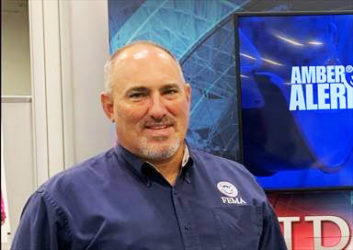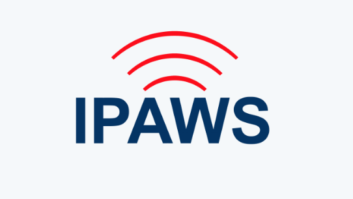 The NAB Show is set for October in Las Vegas.
The NAB Show is set for October in Las Vegas.
Wade Witmer is deputy director of the Integrated Public Alert & Warning System, or IPAWS, Program Management Office in FEMA National Continuity Programs. This is one in a series of interviews with exhibitors ahead of the show.
Radio World: What is your news or message for NAB Show attendees?
Wade Witmer: Our message is “IPAWS Loves Broadcast Resilience.”
With the modernization of the National Public Warning System — NPWS Primary Entry Point or “PEP” stations — the opening of our new 24/7 Technical Support Services Facility and our advocacy to the Federal Communications Commission for the recent changes to EAS, FEMA wishes to show the continued viability of EAS and our support for broadcasters.
We invite NAB Show attendees to the FEMA exhibit, where they can talk with our experts on EAS usage and all things alerting.
The 2021 IPAWS National Test, conducted Aug. 11, delivered the EAS portion of the test via the broadcast “daisy chain.” We want to hear attendees’ experiences receiving and forwarding the test to their audiences.
RW: What are the most important trends or changes in alerting?
Witmer: First, we’re watching the development of advanced alerting capabilities in ATSC 3.0.
Also, IPAWS-OPEN, FEMA’s central alert message aggregator, has been moved from brick-and-mortar servers to a cloud provider. This gives us the flexibility and resilience to survive connectivity issues and localized data-center issues.
The IPAWS PMO has updated the training materials and documentation it offers Alerting Authorities, which are agencies of state, local, tribal and territorial governments authorized to send public alerts through IPAWS.
Further, the FCC has affirmed the important role of State Emergency Communications Committees in planning for public alerting. The IPAWS PMO looks forward to coordinating with SECCs to fine-tune and improve their plans.
Finally, FEMA is coordinating with the FCC about Persistent EAS Alerts as called for in the National Defense Authorization Act. FEMA notes that these types of emergency alerts “should persist on EAS until the alert time has expired or is cancelled by the alert originator.”
RW: How has the pandemic affected the organization’s work?
Witmer: Our staff has maintained contact with Alerting Authorities, Alert Origination Software Providers and regulatory agencies by email, teleconferencing and telephone. If anything, because of the critical demands of emergency events at this time, our communications have improved.
FEMA teams continue to travel to NPWS stations to supervise facilities construction, testing and maintenance.
RW: Anything else we should know?
Witmer: The National Weather Service is not posting their weather alerts and warnings to the IPAWS EAS Feed. Broadcasters need to know that the only source for NWS alerts for EAS participants is via NOAA Weather Radio or another custom source.
For more information on IPAWS, check out our website at www.fema.gov/ipaws or email [email protected].












